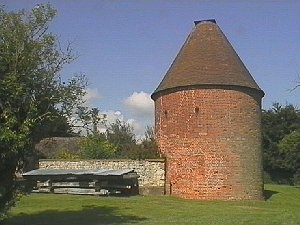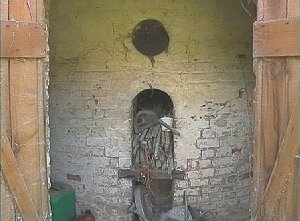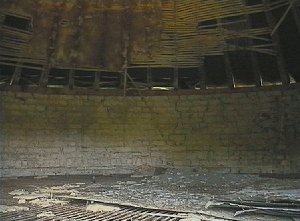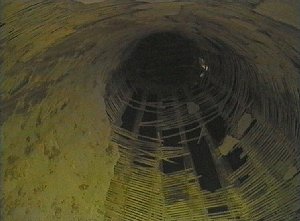

| From the Froyle W.I. Scrapbook of 1952 | |
 Froyle seems to have had few serious fires in
which it is fortunate considering how many of the cottages were,
and still are, thatched. Froyle seems to have had few serious fires in
which it is fortunate considering how many of the cottages were,
and still are, thatched. One unforgettable fire, however, was that in a hop kiln at Hodge’s about fifty years ago when William Bunce lost his life. Here is the story told by his son Arthur to the Coroner’s Jury when it met at the Traveller's Rest two days after the fire, and reported by the Hampshire Herald. “On Wednesday night, the 18th inst., about half past nine, deceased and myself were moving hops from the ‘hair’; (a large sieve) I was shovelling and father was sweeping behind me to dry hops off the kiln...... There was a lamp hanging close to the doorway, it was a paraffin lamp, with wire all round the glass. As I was throwing the hops out of the doorway, the handle of the shovel struck the bottom of the lamp and knocked it over; as it was falling the oil fell out, and a blaze struck up all round my feet. I could not see my father, so I jumped down into the store room and from there down to the ground outside.; the other fellow, Wm. Pinnells, done the same. I could not get through the flame to my father; he was a fairly active man. It was impossible for me to get at my father; there was an ‘hair’ cloth there and blazed up immediately. I picked up the lamp directly it fell and slung it out of the door and the oil dropped as I threw it.” Nothing could be done to save William Bunce, but the villagers rushed to the scene to save the ricks and barns by throwing buckets of water over them. Mr. Westbrooks nephew, Mr. Edwin Brownjohn, jumped on his horse and galloped the five miles to Alton to call the Fire Brigade, shouting “Fire! Fire!” as he went through the village. |
|

|
|
 |
The bottom of the Kiln housed the chamber where the fire, used to dry the hops, was lit. This central firebed curves out as it rises towards the grid above and the outer part forms a store room. |
 |
This is the hop drying area. A metal grid separates it from the fire below, and the hops were spread out to dry on the grid. |
 |
Above the hop drying area the roof forms a chimney to provide an updraft. |
All the pictures on this
page are stills from “1000 Years of Froyle”
|
|